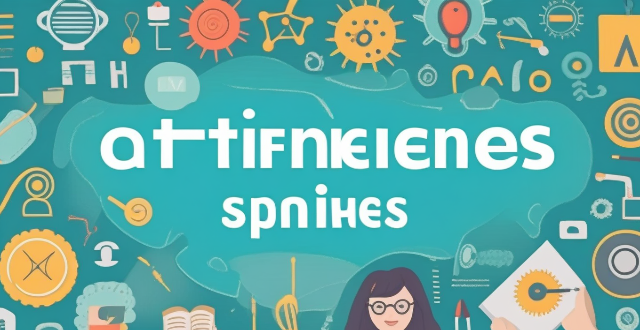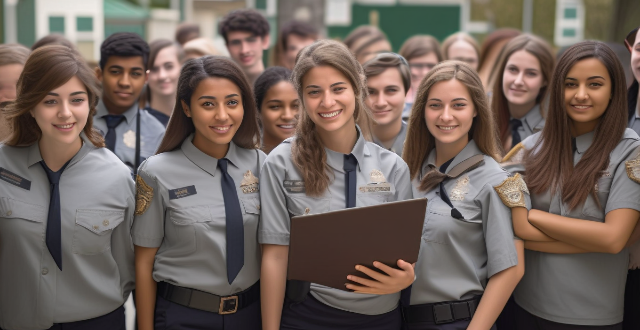Education Training

What is the best approach for training teachers in special education needs ?
This text discusses the importance of training teachers in special education needs (SEN) to ensure all students receive an appropriate education. It suggests a comprehensive approach that includes understanding the importance of SEN, foundational knowledge and skills, practical application, emotional and behavioral support, communication and partnership, and continuous professional development. The text emphasizes the need for ongoing training, reflective practice, and collaboration with professionals from related fields to provide holistic support for students with SEN.

What training should regular education teachers have to effectively teach students with special education needs ?
Regular education teachers require specialized training to teach students with special education needs (SEN). This should include understanding of SEN, differentiated instruction, collaboration and communication, data collection and analysis, and cultural competency. By equipping teachers with these skills, we can create a more inclusive learning environment for all students.

How can critical thinking training be incorporated into education ?
Incorporating Critical Thinking Training into Education: - Defined as the ability to analyze and evaluate information, critical thinking is crucial for effective decision-making. - Integrating it into education enhances students' learning experiences and readies them for personal and professional growth. - Strategies include curriculum design that integrates critical thinking across subjects and uses real-world applications; teaching methods such as the Socratic Method and inquiry-based learning; assessments that measure these skills; and professional development for educators. - By prioritizing critical thinking in education, students become better equipped for academic success and future careers, developing into engaged, curious, and adaptable learners.

What education and training is required to work as a sports agent ?
Education and training are crucial for aspiring sports agents, who must possess a bachelor's degree in relevant fields and often benefit from a master's degree. Internships and certification programs offer hands-on experience and professional development, while key skills include communication, business acumen, legal knowledge, networking ability, and ethical standards. Continuous learning is essential to adapt to industry changes and ensure long-term success.

How do these education policy updates align with global education standards ?
Education policy updates align with global education standards in various ways, including curriculum reform, diverse assessment methods, teacher professional development, technology integration, and prioritizing student well-being and inclusivity. These efforts aim to equip students with the necessary skills and knowledge to thrive in a globalized world.

How can we improve climate change education in higher education institutions ?
Climate change is a pressing global issue that requires immediate attention and action. Higher education institutions play a crucial role in shaping the future leaders and decision-makers who will tackle this challenge. Therefore, it is essential to improve climate change education in these institutions to ensure that students are well-equipped with the knowledge, skills, and attitudes necessary to address this complex issue. Key strategies for improving climate change education include integrating climate change into curriculum, promoting research and innovation, engaging students in real-world projects, fostering sustainability on campus, enhancing faculty training and development, and encouraging student leadership and advocacy. By implementing these strategies, higher education institutions can play a vital role in addressing climate change and creating a more sustainable future.

How do international teacher training standards compare across different countries ?
This text is about the differences in teacher training standards across countries. It explains that while there are some common elements to most teacher training programs, such as foundational education and practical experience, there are also significant differences due to factors like cultural influences and funding. The text then goes on to describe these differences in more detail.

How do women's health and education projects address global disparities ?
Women's health and education are crucial for global development, affecting communities' well-being. Women's health projects ensure access to quality healthcare services, including prenatal care and family planning. Education initiatives promote gender equality by increasing girls' enrollment rates and eliminating classroom biases. Economic empowerment projects provide job training and microfinance loans to women entrepreneurs. These efforts create a more equitable world where everyone can thrive.

What are the latest updates in education policy ?
The latest updates in education policy focus on improving the quality of education, increasing accessibility, and preparing students for future challenges. Key areas of reform include remote learning and online education, inclusive education, curriculum reform, teacher professional development, and funding and resource allocation. These changes aim to create a more effective and equitable educational system for all students.

What strategies have been successful in promoting female education in developing countries ?
Promoting female education in developing countries is crucial to socio-economic development. Successful strategies include community engagement, government policies, education system reforms, partnerships, and technology integration. These efforts aim to ensure every girl has the opportunity for quality education.

How can we improve climate education in schools ?
Climate education is a crucial aspect of modern education that helps students understand the complexities of our planet's climate system and the impact of human activities on it. Improving climate education in schools requires integrating climate science into various subjects, training educators, engaging students through real-world experiences, and utilizing technology and multimedia tools. By implementing these strategies, we can prepare future generations to tackle the challenges posed by climate change and create a more sustainable future for all.

What are the challenges faced by remote education platforms ?
The challenges faced by remote education platforms include technical issues such as slow internet connections, inadequate hardware, and software compatibility. Educational quality can be affected due to limited interaction, the need for curriculum adaptation, and difficulties in assessment. Accessibility is a concern due to the digital divide, language barriers, and disabilities. Teacher training and support may be lacking, leading to suboptimal learning experiences for students. Student motivation and mental health can also be impacted by reduced face-to-face interaction and prolonged periods of isolation. These challenges underscore the need for continuous improvement and innovation in remote education to ensure equal opportunities for all students.

How do online teacher training courses compare to traditional in-person workshops ?
This text compares online teacher training courses with traditional in-person workshops in terms of flexibility, interactivity, cost-effectiveness, personalization, networking opportunities, practice and application, technology requirements, certification, scalability, and updates. It concludes that both have unique advantages and limitations, and the choice often depends on individual preferences and the specific goals of the training.

How can education help combat climate change ?
Education is a powerful tool in the fight against climate change by fostering awareness, promoting sustainable practices, stimulating innovation, and shaping policy. It empowers individuals to make informed decisions and advocate for environmental protection through comprehensive science education, applied learning experiences, interdisciplinary research, and civic engagement. By integrating sustainability into curricula and encouraging global perspectives, education prepares future generations to tackle the complex challenges of climate change effectively.

What role do education and training play in developing a green workforce ?
Education and training are crucial for developing a green workforce by providing knowledge, skills, and fostering positive attitudes towards sustainability. This includes understanding environmental issues, implementing green practices, and appreciating the importance of resource conservation. Benefits of a green workforce include cost savings, improved reputation, contribution to global sustainability goals, and enhanced employee satisfaction.

What role does education play in promoting inclusivity through policy-making ?
Education is crucial in promoting inclusivity by providing equal opportunities, breaking down barriers, enhancing social mobility, promoting cultural awareness, and empowering individuals. Education policies should prioritize accessibility, diversity, teacher training, funding for underrepresented groups, and accountability measures to ensure that all individuals have equal access to education and can succeed regardless of their background or abilities.

How do remote education platforms address the digital divide issue ?
The digital divide in education refers to the gap between students who have access to modern information and communication technology (ICT) and those who do not. Remote education platforms can help bridge this divide by providing affordable technology, broadband internet access, training and support, and collaborating with schools and districts. These strategies ensure that all students have equal access to educational resources and can fully participate in online learning environments.

What role does technology play in modern education systems ?
The text discusses the role of technology in modern education systems, highlighting its ability to enhance accessibility, personalize learning experiences, improve collaboration and communication, refine assessment methods, and facilitate lifelong learning. It also acknowledges potential challenges such as the digital divide, overreliance on technology, and data privacy concerns. The conclusion emphasizes that while technology offers numerous opportunities for education enhancement, it should be integrated thoughtfully to avoid potential pitfalls.

What are the cost implications of using a remote education platform ?
Using a remote education platform can have various cost implications for both the institution and the students. Institutions may need to invest in hardware, software, staff training, and ongoing maintenance. Students may also need their own devices and internet access, as well as additional resources. It is important to carefully consider these costs before deciding to use a remote education platform.

What are the implications of these education policy updates for higher education ?
Education policy updates have significant implications for higher education institutions, students, and educators. These policies can impact the quality of education, access to education, and the overall structure of higher education. One of the main implications is the potential for curriculum changes, which could lead to changes in course offerings, teaching methods, and assessment practices. Another implication is the need for faculty development, as educators may need to update their skills and knowledge to effectively implement new requirements. Changes to financial aid policies and admissions policies can also impact access to higher education. For example, if a policy requires universities to admit a certain percentage of underrepresented groups, institutions may need to revise their admissions processes to ensure compliance. Finally, education policy updates can influence the structure of higher education by modifying accreditation standards and promoting inter-institutional collaboration. It is essential for higher education stakeholders to stay informed about these policy updates and adapt accordingly to ensure that they continue to provide high-quality educational experiences for all students.

Why is critical thinking training important ?
In today's complex world, critical thinking training is essential for effective problem-solving, communication, objectivity, creativity, and future preparedness. It enhances decision-making, collaboration, fairness, open-mindedness, and adaptability to changes. Investing in this training leads to success and positive impacts in various domains.

What are the challenges of implementing multicultural education in schools ?
**Implementing Multicultural Education in Schools: The Challenges** **Introduction** Multicultural education aims to foster inclusivity and respect for diverse cultures in schools. However, its implementation faces several challenges. **Challenges** 1. **Limited Resources**: Financial constraints and difficulties in obtaining culturally representative materials. 2. **Resistance to Change**: Traditional mindsets and fear of the unknown among educators. 3. **Lack of Training**: Insufficient professional development for teachers on multicultural education. 4. **Language Barriers**: Communication gaps and translation needs for non-native speakers. 5. **Stereotyping and Misinformation**: Risk of misconceptions and stereotypes without proper representation. 6. **Balancing Curriculum Content**: Overemphasis on majority cultures and equal representation concerns. 7. **Socio-Political Sensitivities**: Handling controversial topics and avoiding offense. **Strategies for Overcoming Challenges** 1. **Advocacy and Fundraising**: Seek external support and apply for grants. 2. **Professional Development Programs**: Organize training workshops and encourage continued learning. 3. **Collaborative Planning**: Foster teacher collaboration and build diverse teams. 4. **Embrace Technology**: Use language apps and digital resources for multicultural materials. 5. **Address Stereotypes Directly**: Teach critical thinking and host cultural exchanges. 6. **Comprehensive Curriculum Review**: Ensure inclusivity and establish feedback mechanisms. 7. **Sensitive and Thoughtful Approach**: Encourage open dialogue and educate on cultural competency. **Conclusion** Implementing multicultural education is crucial for inclusive learning environments. Addressing these challenges with proactive strategies can help schools successfully integrate this approach, preparing students for a diverse world where cultural differences are celebrated.

What role does public education play in preventing residential fires ?
The text discusses the crucial role of public education in preventing residential fires. It emphasizes that through raising awareness, promoting safety practices, and collaborating with local agencies, public education can contribute significantly to reducing the incidence of such fires. The article outlines key points including common causes of fires, prevention strategies, emergency preparedness, installation of smoke detectors, maintenance of heating equipment, use of fire extinguishers, collaboration with local agencies for comprehensive training, and community outreach programs for disseminating safety information.

How can education and awareness programs support climate adaptation ?
Education and awareness programs are crucial for climate adaptation, empowering individuals, communities, and policymakers with knowledge and skills to understand and respond to climate change impacts. These programs can raise public awareness, enhance decision-making capabilities, build resilience, promote sustainable practices, and facilitate behavioral change. Key actions for implementing effective education and awareness programs include curriculum integration, public campaigns, community workshops, and partnership initiatives.

What are the benefits of using data analytics in education ?
Data analytics has become an increasingly popular tool in education, offering benefits such as improved student performance through personalized learning and early intervention, enhanced teaching practices with curriculum development and professional development, and better decision making with evidence-based decision making and transparency. As technology advances, data analytics is likely to become an even more integral part of the educational landscape.

Why is it important to have regular safety training for construction workers ?
Construction sites are dangerous places with numerous potential hazards. Regular safety training for construction workers is essential to mitigate these risks. It enhances awareness of potential hazards, promotes a culture of safety, and ensures compliance with regulations and standards. Ongoing education and training helps workers identify new hazards, develop preventive measures, build a shared responsibility for safety, reinforce safe work habits, meet legal requirements, and maintain insurance coverage. By investing in regular safety training, construction companies can create safer work environments, protect their employees, and avoid costly fines and legal liabilities.

What policies have countries implemented to ensure equal access to education for both sexes ?
Policies for Equal Education Access: Key Policies and Challenges

What role do education and awareness play in promoting citizen action on climate change ?
Education and awareness are crucial for promoting citizen action on climate change. They help individuals understand the science, develop skills, foster critical thinking, raise consciousness, mobilize public support, and promote behavioral change. Strategies for enhancing education and awareness include integrating climate change into curricula, community workshops, media campaigns, and partnerships with NGOs and corporations. Investing in education and awareness is essential for creating a more resilient and equitable future.

How can we address the lack of climate education in developing countries ?
Addressing the lack of climate education in developing countries requires a multi-faceted approach that considers local contexts, cultural values, and educational infrastructures. Strategies include prioritizing climate education at the policy level, enhancing access to educational resources, training and supporting educators, community engagement and empowerment, building sustainable infrastructure, research and development, and international cooperation and exchange. By implementing these strategies, developing countries can work towards bridging the gap in climate education and ensure that future generations are equipped with the knowledge to confront the challenges of our changing climate.

How will these education policy updates impact the future of education in our society ?
Education policy updates may increase access to education, emphasize STEM education, and improve student outcomes.